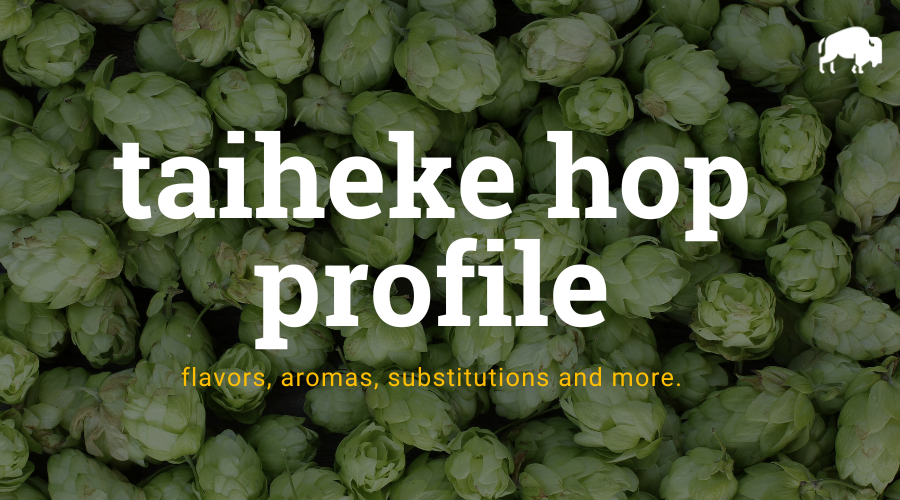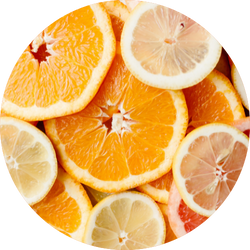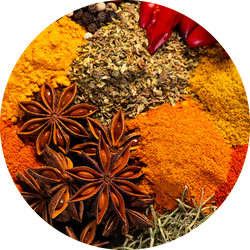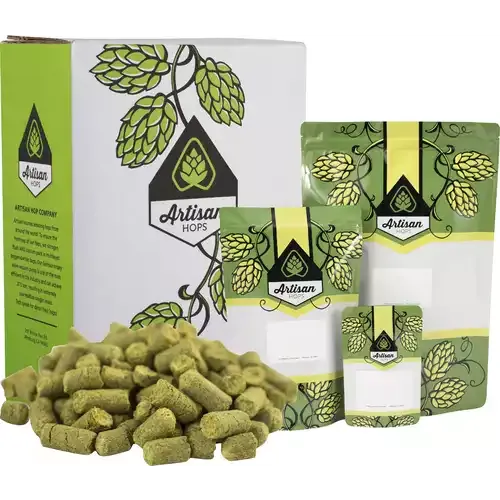
Taiheke hops, a New Zealand variety with American genetics, originated from a breeding program in 1956. Bred from English Fuggle and a male derived from the Russian varietal Serebrianka, it was commercially released in 1972. Known for its bright grapefruit, lime, and sweet fruit aroma, Taiheke hops have evolved through selection, agronomics, and “Terroir” to exhibit exceptional citrus and tropical fruit characteristics.
Taiheke hops are dual-purpose and work well as a single variety throughout multiple kettle additions or as a late addition for dry hopping. They pair nicely with other New Zealand aroma heavyweights like Motueka. The flavor profile includes tropical, floral, grapefruit, lime, and lemon notes, making it suitable for beer styles such as Hazy IPA, IPAs, Pale Ale, Session IPA, and summer ales with a refreshing finish.
| Usage: | Dual-Purpose |
| Country of Origin: | New Zealand |
| Hop Growers Code: | USDA 56013 |
Where To Buy Taiheke Hops
Sought after for its bright aroma of grapefruit, lime, and sweet fruit.
Taiheke Flavor And Aroma
Taiheke is a dual-purpose hop that is often described to have the following aroma characteristics:

grapefruit, lemon, lime, citrus

floral

spice
Taiheke Hop Oil Breakdown
Hop oils can vary from year to year and farm to farm but based on our research, here are the typical values we have seen reported. This information comes from various hop farms, The Hop Aroma Compendium, and For The Love Of Hops.
| Alpha Acid % (AA) Alpha acids are what is isomerized when boiling to create bitterness in beer. | 5% – 9% |
| Beta Acid % Beta acids are what give hops their more aroma and flavor compounds. | 5% – 5.5% |
| Alpha-Beta Ratio This ratio of alpha acids to beta acids determines how quickly bitterness fades during aging. Lower ratios are common for aromatic varieties. | 1:1 – 2:1 |
| Co-Humulone as a % of Alpha Higher numbers are said to impart a harsher bitterness. | 33% – 40% |
| Total Oils (mL/100g) With more total oils, typically comes a more complex hop profile but these are highly volatile compounds. | 1.0mL – 1.5mL |
| Myrcene green, resinous | 50% – 60% |
| Humulene woody, piney | 10% – 20% |
| Caryophyllene woody | 5% – 10% |
| Farnesene floral | 0% – 5% |
| Other Oils: Includes beta-ionine, beta-pinene, limonene, linalool, geranoil & selinene | 5% – 35% |
| Hop Storage Index (HSI) The HSI indicates the percent of alpha and beta acids lost after 6 months of storage at room temperature (68°F or 20°C). | Data Not Available |
| Hop Storage Index (HSI) Rating | Data Not Available |
Taiheke Hop Substitutions
Replacing one hop for another is seldom straightforward but sometimes you don’t have the right hop or the right quantity of hops for the beer you want to make. For those situations, we have made a comprehensive list of hops to substitute on brew day.
These substitutions aren’t perfect as hop chemistry is pretty complex.
We wanted to make this list of substitutions with varietals that are easy to find when possible. For Taiheke, we recommend substituting with the following hops:
Beer Styles
For the most part, any hop could have a place in just about any beer style. Based on popular beers, historical usage, and our own preferences, we would recommend using Taiheke for IPA, New England IPA, Pale Ale, Wheat Beer, Golden Ale. That being said, experiment and see what works best for you.
References
https://www.hopslist.com/
https://www.ars.usda.gov/
https://www.brewersassociation.org/
https://www.barthhaasx.com/
https://www.yakimachief.com/
Hieronymus, Stan. For The Love of Hops. Brewers Publications, 2012
The Hop Aroma Compendium. 2012


